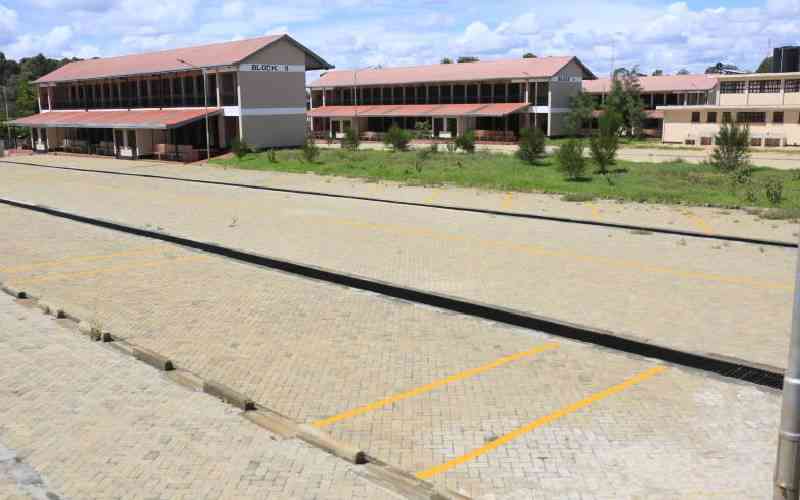Nyeri town’s Asian Quarters Bus Terminus, popularly known as Shakahola Stage, is one of the clearest examples of what urban planners describe as accidental planning. Established on a reclaimed dumpsite/cemetery, the facility has struggled for legitimacy since its completion nearly five years ago. Despite heavy investment, commuters, businesspeople and matatu saccos continue to resist its adoption, forcing the county government to seek court intervention and resort to coercive measures. A transport hub that was envisioned as a modern solution has instead become a textbook case of how infrastructure can fail when divorced from the realities of deliberate organic urban growth.
Ebenezer Howard, in his book, Garden cities of tomorrow, famously stated that “Town planning is not mere place-making, nor even work of embellishment. It is the organisation of the whole of life within a community.” Nyeri town’s experience with the Shakahola Stage is the opposite of this wisdom. Instead of responding to the socio-economic pulse of Nyeri and its daily commuters, the project imposed a structure on a community that neither demanded nor embraced it. The result is visible—empty bays, unutilised spaces, and frustrated operators who find the older, organically grown existing three termini more functional.
From a transportation planning perspective, John Friedmann reminds us that urban mobility systems must enhance accessibility rather than merely relocate congestion. Nyeri has never struggled with PSV access; its matatu nodes at the heart of the town have long served as efficient interchange points. The introduction of a distant, inconvenient terminus disrupted established trip patterns without offering clear advantages in terms of connectivity, comfort, or efficiency. Instead of alleviating transport problems, the Shakahola Stage has compounded them by scattering movement and burdening both commuters and operators.
The obsession with brick-and-mortar projects in Mutahi Kahiga’s governance has overlooked fundamental urban planning principles. True planning is a deliberate process—identifying challenges, setting clear criteria, and implementing phased, monitored interventions that respond to community needs. Shakahola Stage was birthed from political expediency rather than spatial necessity, and today stands as a physical manifestation of chaos, confusion, and resistance. A transport system should attract users naturally. If courts are required to force compliance, the project has already failed its planning test.
Follow The Standard
channel
on WhatsApp
Nyeri town’s challenges lie far beyond transport termini. Any urban practitioner walking its streets will highlight the pressing issues: Hawkers spilling onto carriageways, choked roundabouts, encroached utilities, unplanned taxi stages, poor zoning enforcement, and decaying urban fabric. Add to this the absence of pedestrian walkways, blocked access lanes, and neglected sanitation, and one sees where Nyeri’s planning priorities truly ought to have been. The Shakahola project, instead of addressing these systemic concerns, misallocated scarce resources to a “solution” for a problem that never existed.
Meanwhile, matatu saccos such as 2NK, Nyakati, NYENA Nakons, and 4NTE continue to demonstrate the resilience of Nyer town indigenous transport networks. Their continued preference for the traditional three termini in the town underscores the principle that transport systems are best when they evolve in response to actual commuter demand. Relocating all matatu to one stage is not a well thought-out urban planning idea, especially for a fast growing town with a multi-nuclei model. Urban planners know that transport infrastructure succeeds only when it is accessible, and integrated into the wider urban fabric—conditions Shakahola Stage failed to meet.
The World Bank, which co-financed aspects of this project, must privately regret its involvement. Development partners expect urban interventions to be participatory, demand-driven, and future-proof. What Nyeri received instead was a poorly integrated, top-down imposition that alienated its very users. It is no surprise that, five years on, the stage remains underutilised despite heavy investment. This is the opportunity cost of ignoring public participation and expert advice.
Follow The Standard
channel
on WhatsApp
By Lawrence Kagwi


